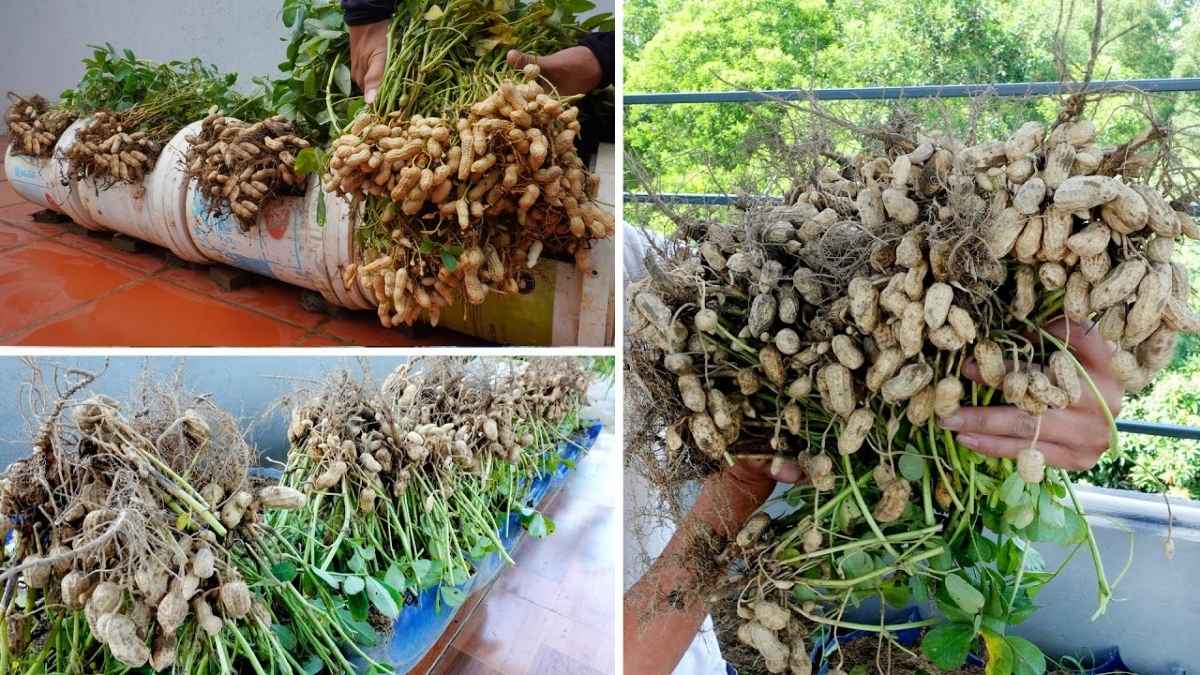Growing peanuts at home can be a fun and rewarding experience. Not only will you get to enjoy fresh peanuts straight from your garden, but you’ll also learn the ins and outs of growing this unique plant. With the right conditions and a little patience, you can cultivate your own crunchy yield of peanuts.
In this guide, we’ll cover everything you need to know: the best time to plant, where to plant them, and how to care for them until it’s time for harvest. Let’s dive in!
Understanding Peanuts: A Brief Overview
Peanuts, also known as groundnuts, are legumes, not true nuts. They grow underground, which makes them different from many other types of plants. While they do require some care and attention, growing peanuts at home is relatively easy, as long as you provide the right environment.
Why Plant Peanuts? The Benefits of Growing Your Own
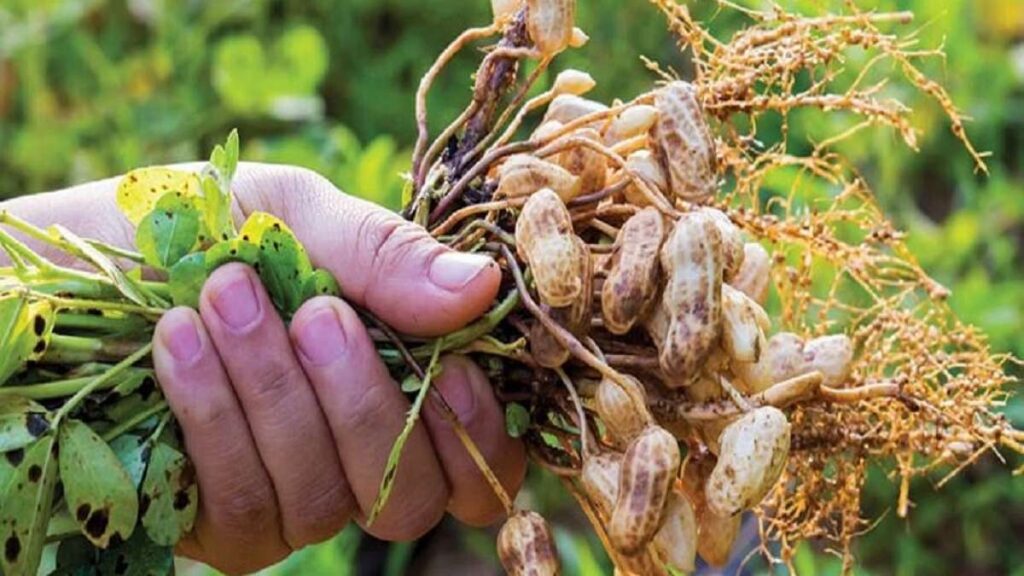
Growing peanuts at home has some pretty solid perks. For one, it’s a great way to control what goes into your food. No pesticides or chemicals here just fresh, organic peanuts! Plus, peanuts are easy to grow in warm climates and can be a fun way to get into gardening.
Also, peanuts grow underground, which makes them a bit of a mystery crop. You’ll never really know what’s going on down there until it’s time to harvest, adding a bit of suspense to the gardening process!
Choosing the Right Variety
Before planting, choose a variety of peanut that suits your climate and growing space. There are different types of peanuts, but the most common ones are:
- Virginia: Large, crunchy peanuts typically used for snacking.
- Runner: Known for their consistent size, often used in peanut butter.
- Spanish: Smaller, with a higher oil content, good for snacks and roasting.
- Valencia: Sweet, often used for making peanut butter and roasting.
Select the variety that fits your needs, keeping in mind that some types require longer growing seasons than others.
Best Time to Plant Peanuts
Peanuts thrive in warm weather, and they need a long growing season. The best time to plant peanuts is after the last frost in spring when the soil has warmed up. Peanuts require temperatures between 70°F and 86°F (21°C to 30°C) for optimal growth. Depending on your location, this might be from late spring to early summer.
Preparing the Soil for Planting
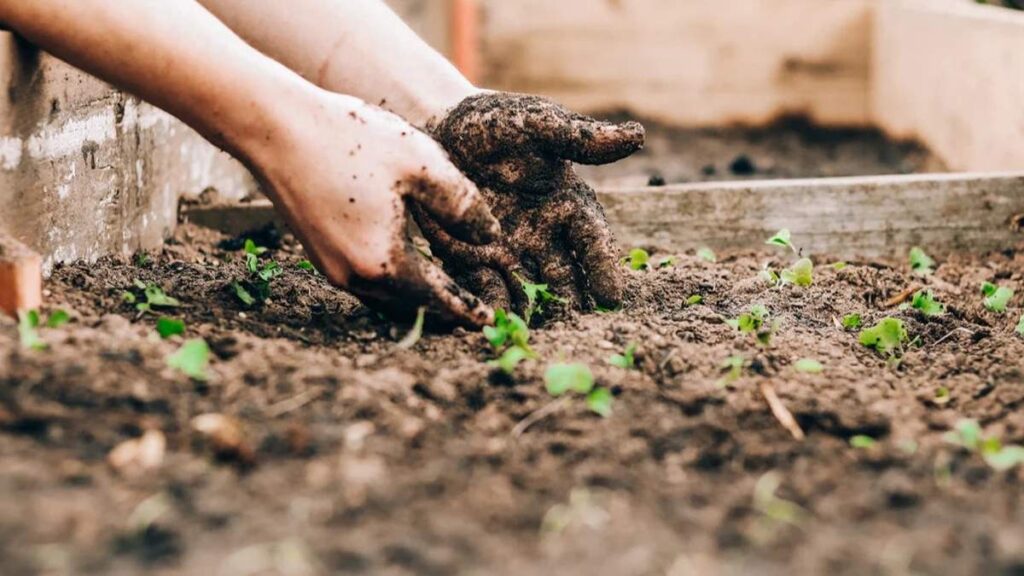
Peanuts need well-drained, loose soil to grow successfully. They don’t do well in heavy clay or overly compacted soil. Here’s how to prepare the soil:
- Choose the Right Location: Pick a sunny spot in your garden that gets at least 6-8 hours of sunlight daily.
- Soil pH: Peanuts prefer slightly acidic to neutral soil with a pH range of 5.8 to 7.0.
- Loosen the Soil: Use a shovel or garden fork to loosen the soil to a depth of about 4-6 inches. Peanuts need space to develop their roots and pods.
- Add Organic Matter: Improve soil fertility by mixing in compost or well-rotted manure. This will help your peanuts grow strong and healthy.
Planting Peanuts
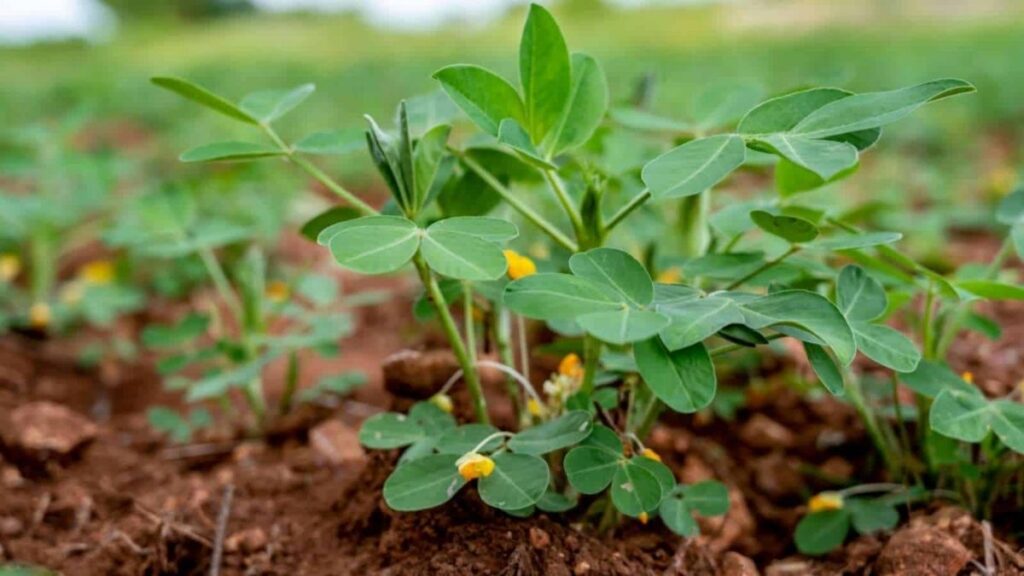
Once the soil is ready, you can start planting. Peanuts are grown from seeds, not nuts, so you’ll need to buy raw, unsalted peanuts with their shells still intact from a local store or garden center.
- Soak the Peanuts: To speed up the germination process, soak the raw peanuts in water for about 12 hours before planting.
- Planting Depth and Spacing: Plant the peanuts about 2 inches (5 cm) deep into the soil. Space each peanut about 6-8 inches apart to give the plants enough room to grow.
- Rows and Spacing: If you’re planting multiple rows, space the rows about 24-30 inches apart. This will provide enough airflow and prevent overcrowding.
How to Care for Peanuts as They Grow
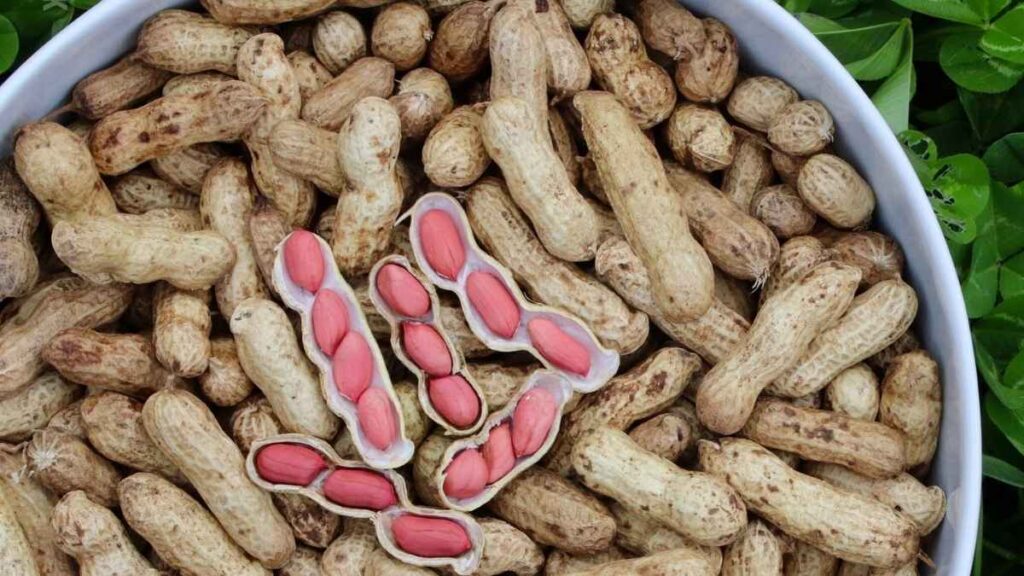
Peanuts are relatively low-maintenance, but they do need some TLC to produce a good yield.
- Water Regularly: Peanuts need consistent moisture to thrive. Aim for about 1–2 inches of water per week, especially during dry periods.
- Fertilize: Peanuts are nitrogen-fixing plants, which means they don’t need much fertilizer. However, adding a light dose of balanced fertilizer (10-10-10) at planting time can give them a good start.
- Weed and Maintain: Keep the area around your peanuts free of weeds. You can gently weed by hand or use a hoe to avoid disturbing the peanut plants.
Peanuts also benefit from being hilled, which is a process where you mound soil around the base of the plant to encourage more pods to form underground. You can do this by gently pulling soil up around the stem as the plants grow.
When to Harvest Your Peanuts
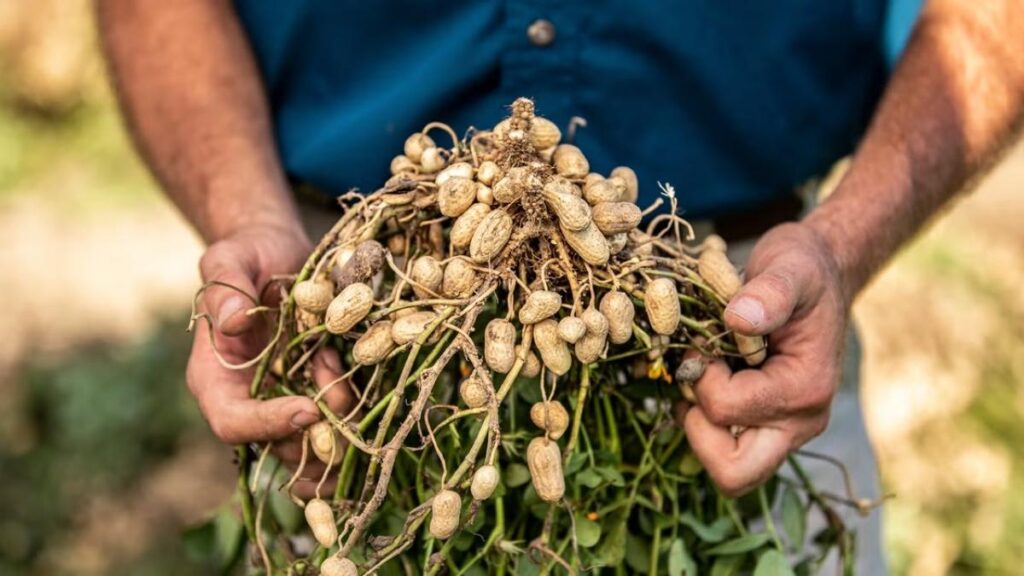
Patience is key when growing peanuts. The plants typically take 4–6 months to mature, so you’ll be looking at a late summer or fall harvest, depending on when you planted them.
Here’s a good rule of thumb: Once the peanut plants start turning yellow and the leaves begin to dry up, it’s time to dig them up. You can gently lift the plant with a shovel, being careful not to damage the roots or pods.
How to Harvest Peanuts:
- Lift the plant: Carefully dig up the plant, keeping the roots intact. You should see the peanut pods attached to the roots.
- Remove the peanuts: Gently pull the peanuts out of the soil. You might need to tap the plant against the ground to loosen any stubborn pods.
- Dry the peanuts: Shake off any excess soil and hang the plants in a cool, dry area to dry for about 2 weeks. Once dry, you can remove the peanuts from their shells.
Storing and Enjoying Your Fresh Peanuts
Once your peanuts are fully dried, they’re ready to eat or store. Here are a few ways you can enjoy them:
- Roasting: Roast peanuts in the oven at 350°F (175°C) for 10-15 minutes for a crunchy snack.
- Making Peanut Butter: Blend roasted peanuts with a bit of salt and oil to make homemade peanut butter.
- Snacking: Enjoy them raw or roasted as a nutritious snack.
To store peanuts, place them in an airtight container in a cool, dry place. If you want to keep them fresh for longer, you can freeze them.
Final Thoughts
Growing peanuts at home is an easy and rewarding process. With a little attention to soil preparation, watering, and care, you can enjoy fresh, homegrown peanuts. Whether you’re roasting them for a crunchy snack or making your own peanut butter, there’s nothing quite like the taste of freshly harvested peanuts from your own garden. Happy planting!

